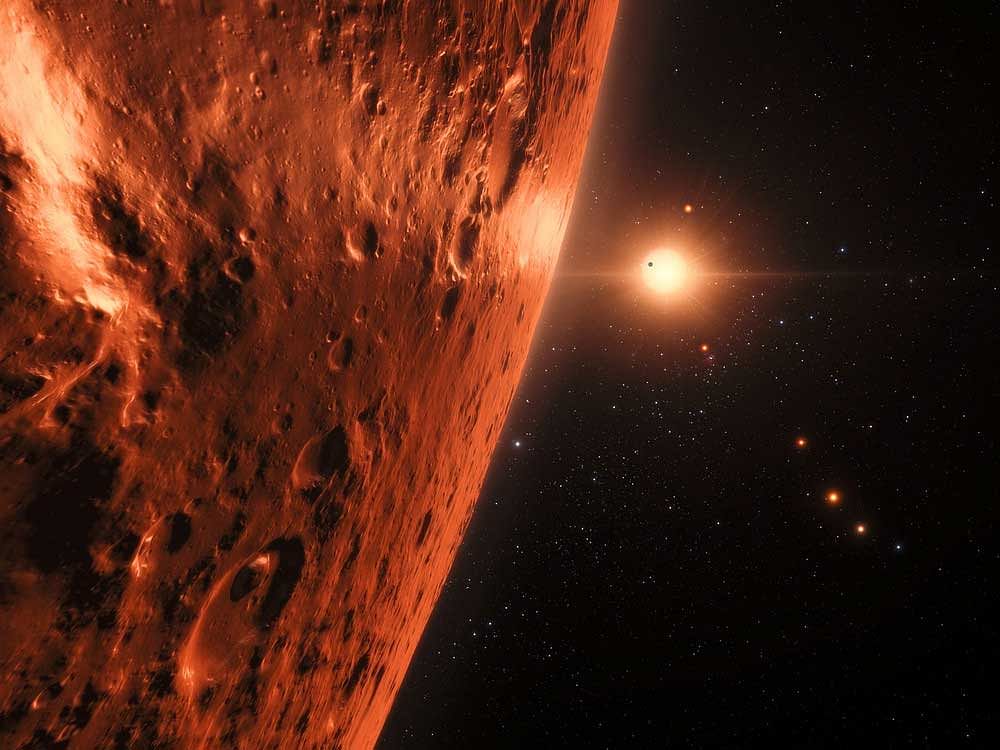
Astronomers say they have discovered a rogue exoplanet with its own atmosphere in the Neptunian Desert.
NGTS-4b, nick-named 'The Forbidden Planet' is smaller than Neptune but three times the size of Earth, said researchers led by the University of Warwick in the UK.
The exoplanet, described in the journal Monthly Notices of the Royal Astronomical Society, has a mass of 20 Earth masses, a radius 20 per cent smaller than Neptune, and temperature of 1000 degrees Celsius.
It orbits around the star in only 1.3 days -- the equivalent of Earth's orbit around the Sun of one year.
It is the first exoplanet of its kind to have been found in the Neptunian Desert, researchers said.
The Neptunian Desert is the region close to stars where no Neptune-sized planets are found, they said.
This area receives strong irradiation from the star, meaning the planets do not retain their gaseous atmosphere as they evaporate leaving just a rocky core.
However, NGTS-4b still has its own atmosphere of gas.
When looking for new planets, astronomers look for a dip in the light of a star -- with the planet orbiting it and blocking the light.
Usually, only dips of one per cent and more are picked up by ground-based searches.
However, the NGTS telescopes, situated in the Atacama Desert, Chile, can pick up a dip of just 0.2 per cent.
Researchers believe the planet may have moved into the Neptunian Desert recently, in the last one million years, or it was very big and the atmosphere is still evaporating.
"This planet must be tough—it is right in the zone where we expected Neptune-sized planets could not survive," said Richard West, from the University of Warwick.
"It is truly remarkable that we found a transiting planet via a star dimming by less than 0.2 per cent -- this has never been done before by telescopes on the ground, and it was great to find after working on this project for a year," West said.
"We are now scouring out data to see if we can see any more planets in the Neptune Desert -- perhaps the desert is greener than was once thought," he said.